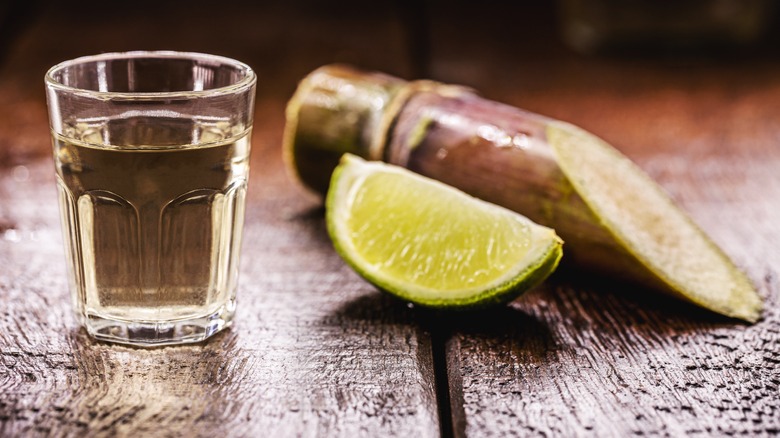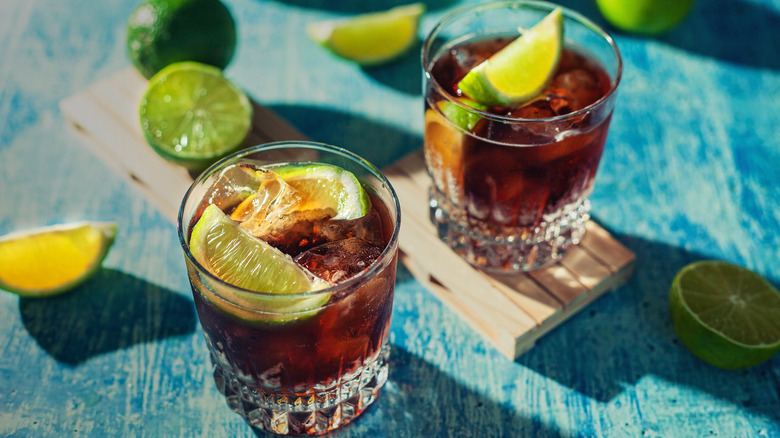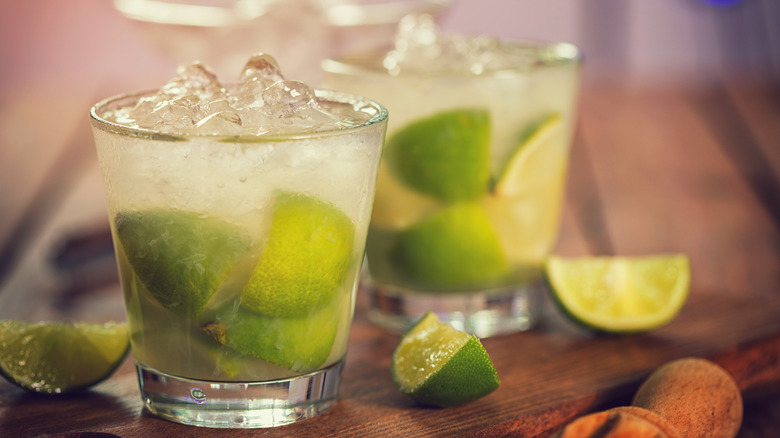The Difference Between Brazilian Cachaça And Rum
It's entirely possible that you may have heard Brazilian cachaça referred to as Brazilian rum, and while that's not entirely wrong, it's not exactly correct, either. At a glance, the two are similar: They're both made from sugarcane, and they're both available as white, unaged spirits as well as caramel-colored aged liquors, but take a closer look, and their similarities end pretty quickly.
Even though it's rum that's arguably more popular in the U.S., cachaça is lesser known and thought to be much older. That dates back to some time in the 17th century, and it has a horrible origin story. The first people to drink it were Brazil's population of enslaved persons, who were given daily rations of cachaça as a sort of pain medication. Over the years, cachaça became wildly populated, was banned on June 12, 1744, and later became a symbol of national pride. Rum, on the other hand, comes from a completely different area of the world — Barbados — and spread very, very quickly as part of a key component of the slave trade.
Rum and cachaça have entirely different production and distillation processes, which result in spirits that taste different and have different levels of alcohol. While cachaça is required to be 40% ABV, rum can be bottled at anywhere between 40% and 60%. While they can be substituted for each other in most cocktails that call for them, they vary enough that the swap will overhaul the flavors of the entire drink.
Rum and cachaça are made with different processes
The differences between rum and cachaça start right from the beginning. In the production of rum, sugar is turned into molasses, which is then used in the distillation of the spirit, while in cachaça, it's the sugar juice extracted from the cane that's used — no molasses-making required. Since cachaça is made with raw sugar cane juice, there's an interesting thing that happens. Much like the flavors of wine change based on the terroir — defined as the impact the environment has on grapes — cachaça varies based on the location and environment of the sugar cane.
Sugar cane for cachaça is sourced from across Brazil, and it's worth noting that, unlike rum, cachaça is a legally protected product. Laws dictate that to be cachaça, it must be made in Brazil.
Rum and cachaça are also aged differently. While rum can be bottled immediately or aged — often in American oak barrels that were previously used to age sherry or whiskey — cachaça is often bottled immediately after distillation at 40% ABV or aged in barrels made from hardwoods indigenous to Brazil and other countries in South America. While those indigenous hardwoods are selected for the impact they have on the final flavor, they also tie cachaça to the land: Many of the trees are endangered, and some distilleries are using their processes to illustrate the importance of responsible sourcing and conservation.
Cachaça and rum have different flavors, strengths, and uses
Although the flavor profiles of both rum and cachaça vary widely, some generalizations can be made, including that cachaça is bottled at a lower proof than most rums. Cachaça can also be considered less processed and, therefore, closer to the herbaceous nature of raw sugarcane.
Typically, cachaça tends to have a more earthly, grassy flavor. Imagine the smell of mowing the lawn in the summertime, and that's the sort of freshness that cachaça is renowned for. On the other hand, rum tends toward the spicy and sweet side of things. There's a wide variety in the flavors of rum, but they're more likely to be described as having tastes of vanilla, nutmeg, caramel, and even leather.
Because of differences in flavor, the two work differently in cocktails but can be substituted for each other. Thanks to the light, fresh, earthiness of cachaça, though, it really shines in cocktails that can lean into that herbaceous flavor. Think of simple cocktails with soda water, a dash of sugar, and some fruit, the combination that makes cachaça's signature cocktail so popular. The ultimate summer cocktail, the Caipirinha is just cachaça, lime, and sugar, served over ice, and it's a must-try that's been popular in Brazil since at least the mid-1800s. It — and versions like the Caipirinha de uva, which adds grapes — are classic for a reason.


